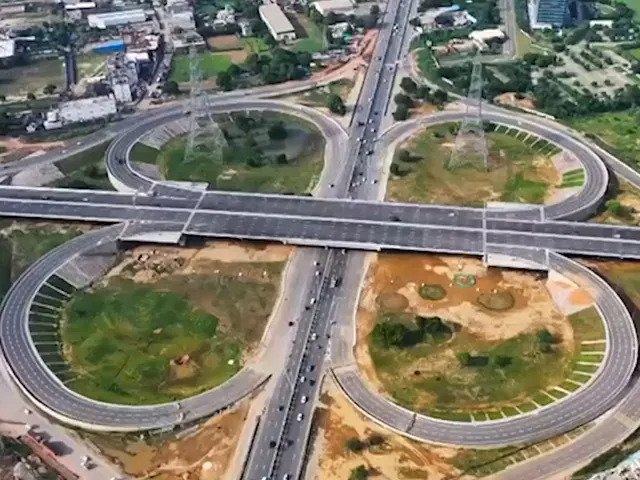WATCH | Nitin Gadkari shares glimpse of India's first 8-lane elevated road: All about Dwarka expressway
Total Views |
Calling it a "marvel of engineering" and a "state-of-the-art" project, Union minister Nitin Gadkari shared glimpses of the Dwarka Expressway, India's first elevated road project.

“Marvel of Engineering: The Dwarka Expressway! A State-of-the-Art Journey into the Future,” Gadkari wrote while sharing the video on X. (formerly Twitter).
Marvel of Engineering: The Dwarka Expressway! A State-of-the-Art Journey into the Future 🛣#DwarkaExpressway #PragatiKaHighway #GatiShakti pic.twitter.com/Qhgd77WatW
— Nitin Gadkari (@nitin_gadkari) August 20, 2023
Features of Dwarka Expressway
According to the video, the travel time from Dwarka to Manesar will become 15 minutes, Manesar to Indira Gandhi International Airport will become 20 minutes, Dwarka to Singhu border will become 25 minutes and Manesar to Singhu border will become 45 minutes. The project will also strengthen the connectivity of the International Convention Centre in Dwarka, Sector 25.
The 34-meter wide expressway, being built at a cost of Rs 9,000 crore, is being constructed on a single pillar, covering 18.9 km in Haryana and 10.1 km in the national capital.
The expressway, which will start from Shiv Murti on NH48 and will terminate at Kherki Daula Toll plaza, consists of a four-level road network, incorporating flyovers, tunnels, underpasses, grade roads, elevated roads, and flyovers.
Furthermore, a three-lane service road is being constructed on both sides of the expressway. Moreover, the entire expressway will incorporate an Intelligent Transport System (ITS) facility, enhancing the overall transportation experience.
Controversy
The Comptroller Auditor General of India (CAG) report flagging cost escalation in the construction of Dwarka Expressway. According to the report, tabled in Parliament on August 10, the 29.06-km expressway was built at a “very high” cost of Rs 250.77 crore per km, far beyond the Rs 18.2 crore per km approved by the Cabinet Committee on Economic Affairs.
Apart from the elevated per-kilometre cost of the project, the CAG report also claims that the construction was sanctioned by the Road ministry without a detailed project report (DPR). The Opposition has raised questions over it.
Union Road Transport and Highways Minister Nitin Gadkari said Dwarka Expressway was not 29 kilometres-long as mentioned in the CAG report, but around 230 kilometres-long including the tunnels made as part of the project. Besides, the CAG report didn’t include flyovers, elevated roads, underpasses, tunnels and ring roads as these additional components contribute significantly to the overall construction cost and were not originally included as part of the project.
And, the CAG report didn’t include flyovers, elevated roads, underpasses, tunnels and ring roads as these additional components contribute significantly to the overall construction cost and were not originally included as part of the project.